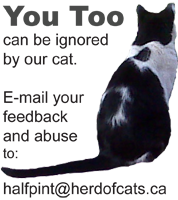You are hereProject Retirement, ep 15
Project Retirement, ep 15
The one where we poop.
Sit down for this one, we are going to have a crap-load of fun! In many of my previous stories I referred to marine toilets as both an operational mystery and the first step in sinking a boat.
Firstly, they are called "heads" in the marine world. Wikipedia explains why: "...the toilet was placed in the bow [next to the "figurehead"] somewhat above the water line with vents or slots cut near the floor level allowing normal wave action to wash out the facility." It also helped that, with old sailboats, the wind came mostly from the back of the ship. In my boat, the heads are mid-ship in each one of the hulls. We still call them heads.
Second, marine toilets are typically hand-pumped. The pump system has two modes: pumping water in, and pumping water out. So, before you begin your business, you pump a bit of water into the bowl. Once you business is done, you pump a little bit more water in (as necessary... Maybe you had Taco Bell on shore, what do I know...), and then flip the pump to "out" mode, and then pump the stuff out. Then pump more water in, then pump the water out.... Typically 3 or 4 times, if the deed was "prolific". It sounds simple at first blush, but explain all of this to all your guests when they first come on-board, and most will think "you know what... I'l just hold it in until I drive home". Never-mind the fact that you must *never* put toilet paper in the toilet; you must use a small bin beside the toilet.
Third, you don't pump your waste out to sea (or lake); you pump into a holding tank. The size of this tank varies greatly depending on the size of your boat. On my boat, the tank is rather small, and finding a "pump out" station at a marina is necessary once every two weeks minimum. The only time you are allowed to pump your waste directly to the outside of your boat is when you are at sea, and a minimum of three nautical miles from the shore (this is in Canada). Some countries will tell you that dumping your waste in any of their sovereign waters will land you in jail. To make sure you do not dump, customs officers will happily come unto your boat and put a lock on your seacock (a nautical term for a spigot).
Fourth, marine toilets and holding tanks need a lot of holes in your boats in order to operate. Typically 4 through-hulls per head; and I have two heads in my boat. Each one of these through-hulls have a seacock that can be closed to make sure that a ruptured water line doesn't sink your boat. The problem is that seacocks are not easy to reach, and are mostly hidden behind bulkheads and floorboards.
Fifth, pumping out a holding tank is easily one of the worse part of owning a boat. Just opening the hole to the tank in order to insert the pump head is about as interesting as sticking your head into a latrine. Never mind the splash damage that can happen if you are dealing with an overflowing tank and a bumpy dock.
Enter composting toilets.
These are more bulky than the regular "bowls" because the "stuff" never leaves the toilet. You open a trap door, you do your business, and you close the trap door. There's a simple mechanism to split the solids from the liquids. The solids are then dried via a very small, and incredibly silent, fan. The solids are mixed with a coconut mulch via a small handle on the side of the toilet. The liquids go into a small tank that you empty every morning into the water, or bring to shore to empty in a regular toilet. It takes a solid month for two people to fill the solids tank. To empty the solids tank, use a garbage bag and flip the solids tank into it. Sounds gross, but dried poop with coconut mulch has no smell, and certainly doesn't look gross. It looks and smells like dirt. In fact it's compost, and it's legal to dig a hole and dump the compost in, if you wish. You can throw it overboard, but you might as well let the land benefit from it. It's so smell-free that opening the trapdoor while you do your business is nasty-free and odourless. You can even use toilet paper and drop it into the tank. These toilets prevent your boat from smelling like a latrine; which a lot of boat owners just ignore and figure it's the price they have to pay to anchor in paradise.
You know what else is fun about composting toilets ? No tanks necessary and no water necessary, since they don't flush. That means you can permanently plug those 4 through-hulls. That's much less holes in the boat for water to come in and sink you. That also means no trips to the pump-out stations, and no overflowing poop tanks. As for the authorities, since you don't have seacocks that need to be locked by customs, they leave you alone.
When I purchased my boat, one of my heads was a composting toilet, and the other was a regular marine toilet with a pump. I had never used a composting toilet before. It's awesome. I am now ripping out my regular marine toilet, and holding tank, and replacing it with another composting toilet.
If you are in the market for one of these bad boys, you have the choice between two large operators: Airhead USA and Nature's Head.
Air Heads: https://airheadtoilet.com
Nature's Head: https://www.amazon.ca/dp/B009Z7EKIC
-

- Login to post comments
- 93 reads








